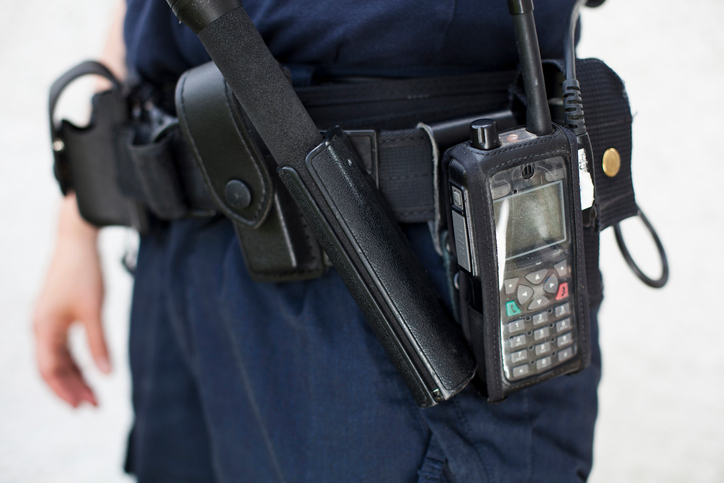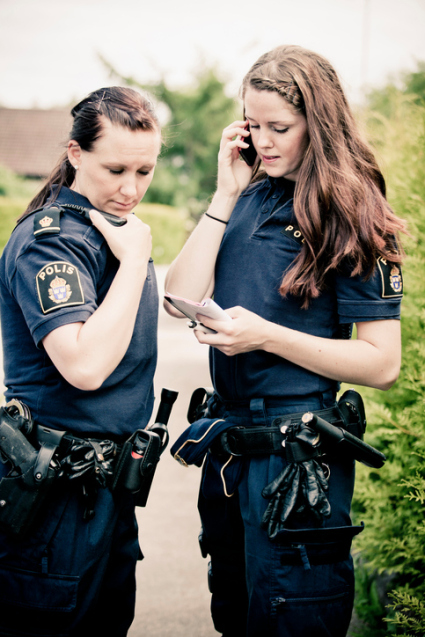 In a violent, scary world, the mission of public safety officers is constrained because they aren’t effectively leveraging an omni-present device: their smartphones (and the software and services available from them). Because most official emergency communications still come through outdated radios and computers bolted to cop cars, officers don’t have the right resources to stop crimes from escalating (or even happening in the first place). As a result, we’re putting them – and citizens – at higher risk.
In a violent, scary world, the mission of public safety officers is constrained because they aren’t effectively leveraging an omni-present device: their smartphones (and the software and services available from them). Because most official emergency communications still come through outdated radios and computers bolted to cop cars, officers don’t have the right resources to stop crimes from escalating (or even happening in the first place). As a result, we’re putting them – and citizens – at higher risk.
It doesn’t have to be this way.
Over the last six months alone, seven U.K. police agencies have signed on to have BlackBerry enterprise software power their smartphone-based secure communications and collaboration channels. They’re switching from tactical mobile device management (MDM) solutions, including AirWatch and MobileIron, to BlackBerry’s enterprise suite. They’re leveraging the work our Government Solutions division has done with our partners and law enforcement customers to provide a set of modern technologies to address some of the most critical problems in policing, including solutions for crime investigations, commander communication, first responders, field officers, intra-agency collaboration, and more.
These customers recognize that today’s BlackBerry is not about smartphones; while we still sell devices, today’s BlackBerry is about providing the leading software solutions that enable public agencies and private businesses to achieve their IT strategy.
 Officers Know: That’s Why Shadow IT is So Common
Officers Know: That’s Why Shadow IT is So Common
Police officers already know their smartphones are valuable to their work – 90% of them say they’re already using a smartphone on the job, but only 17% have an agency-issued device. In order to do their jobs efficiently, these officers are using their personal devices, along with the text messaging, email, and calling apps that come on them, and storing photos and documents in consumer-grade cloud services.
That’s a whole lot of shadow IT happening in an industry that should have as much security as any financial institution or other regulated industry. And, unless enterprise-grade, secure, smartphone-based communications tech becomes the norm in law enforcement, this will not change.
How Secure, Modern Communications Improves Policing
We’d solve a lot of policing problems if officers turned in their radios for smartphones protected by a secure communications platform.
- First response: In addition to intelligent dispatching, officers now can use secure real-time collaboration and two-way secure voice to coordinate more effectively. Also, it allows medics to securely send information and images so hospital staff are ready to treat a seriously injured person as soon as the ambulance gets to the emergency department.
- Situational awareness: Secure messaging and document-sharing apps give officers more information in advance, both background and real-time, so they’re ready for what they may encounter when responding to a call.
- Predictive policing: Data and analytics from Internet of Things devices, social media, and other technologies, delivered over a secure platform, help police forecast, predict, and anticipate a situation. Social media is an important (and untapped) source of information about public safety risks. Think about the teen who sends a Snapchat or Instagram to a handful of friends about an opportunity to hang out while his parents are away, which is then shared across social media, then mushrooms into a party with hundreds of underage drinkers. Or people in an active-shooter situation posting real-time information on Facebook or Twitter.
- Better use of location data: While police cars are usually tracked by GPS, there is no similar setup for officers on foot, bike, or horse. Smartphone GPS tracking would enable dispatchers to make better use of these officers at public events or in high-traffic cities, where they often patrol.

- Body camera data storage: The escalation of police officers wearing body cameras has created the problem of how to collect and store video. Today officers have to return to the police station to transfer the data. But a secure-streaming system can send the data remotely to the main records storage system on the fly.
- Collaboration (and silo busting): Secure, interoperable communications channels with embedded digital-rights management (DRM) facilitates investigations by allowing police to share data, files, and other information with social workers, law enforcement agencies, and other organizations, while maintaining full control of their data.
- Efficiency: Like other government agencies, law enforcement agencies are coping with severe cost pressures, and secure communications channels can increase police efficiency through better, faster collaboration.
Putting Technology into Action
A growing number of police forces are already putting these advanced communications technologies into action with solutions including the BlackBerry Enterprise Mobility Suites; BlackBerry UEM; BlackBerry Workspaces DRM-protected file sharing; AtHoc personnel location, accountability, and communications; and BBM Enterprise (formerly known as BBM Protected) secure messaging. These cross-platform solutions protect whatever devices your officers carry – including Android, iOS, Microsoft, and BlackBerry smartphones and tablets – so they can work with their device of choice without compromise.
As law enforcement agencies around the world are learning, today’s cutting edge mobile enterprise management solutions and apps can arm officers with the tools and information they need to do their jobs better, more efficiently, and more securely. And, as a side benefit, they help agencies achieve the universal mandate for governments to do more with fewer and fewer resources.
For more information about how you can join these agencies at the cutting-edge of policing, visit the official web page.
